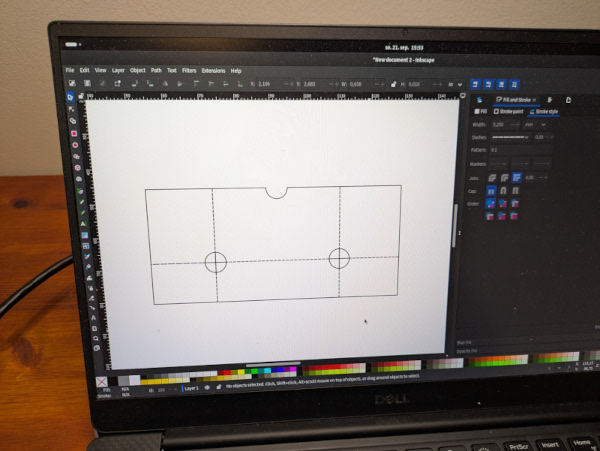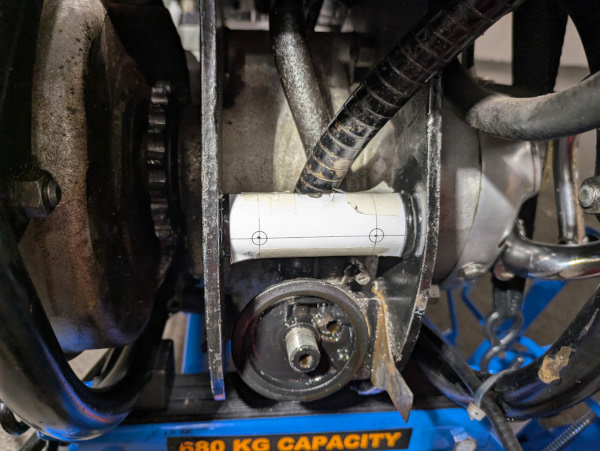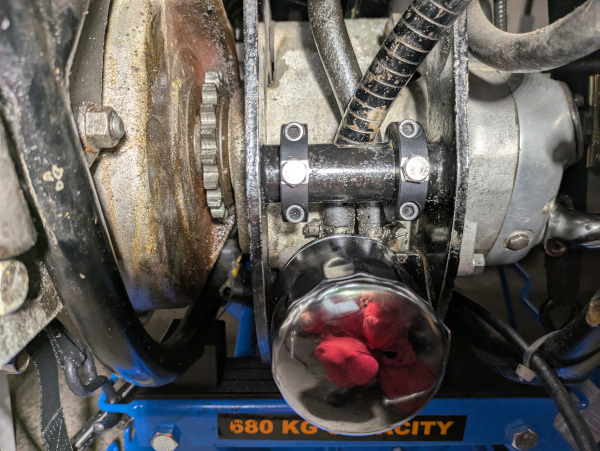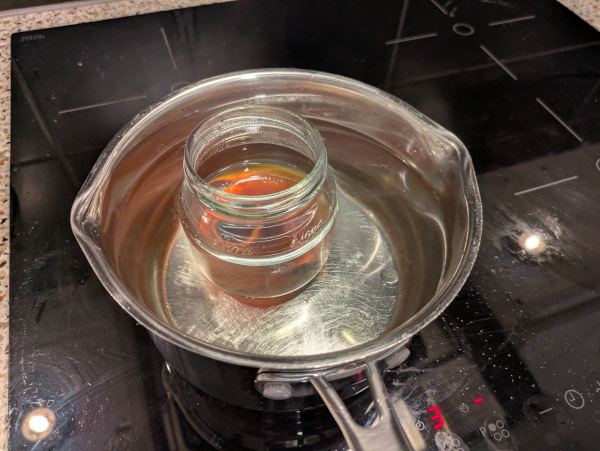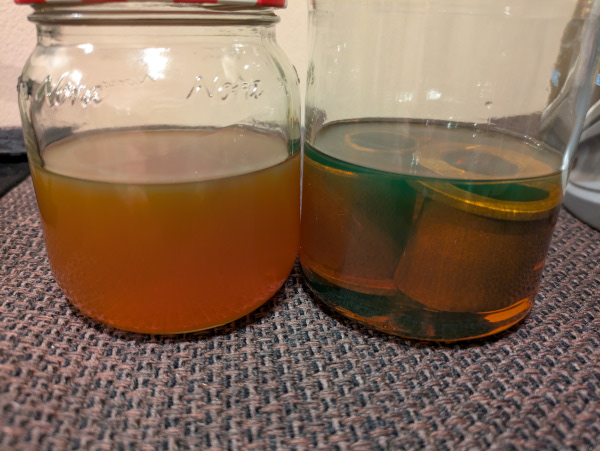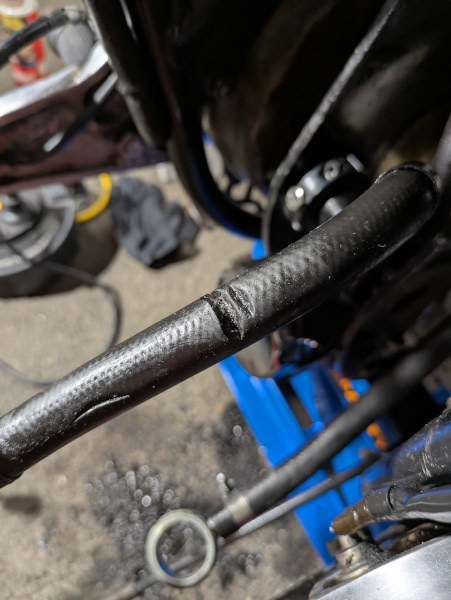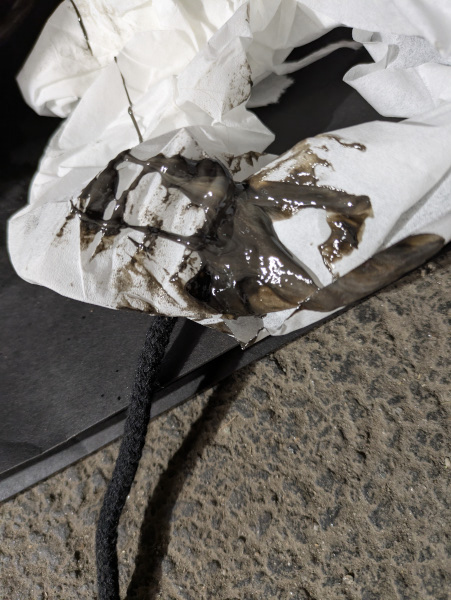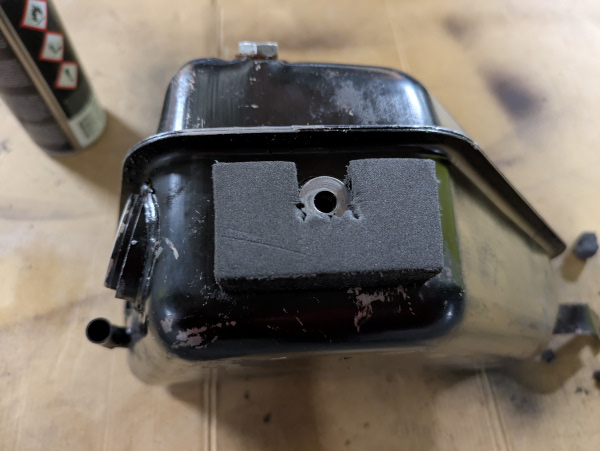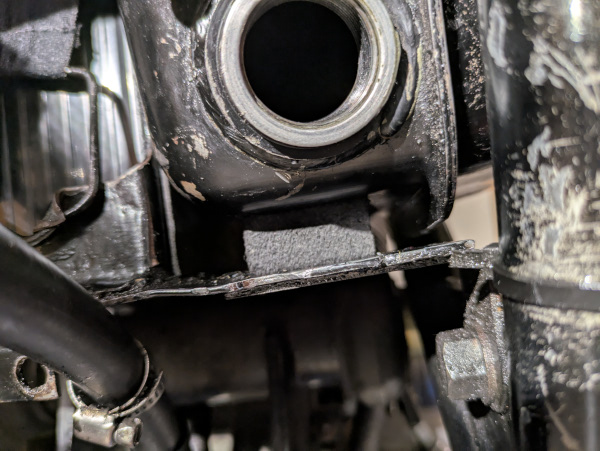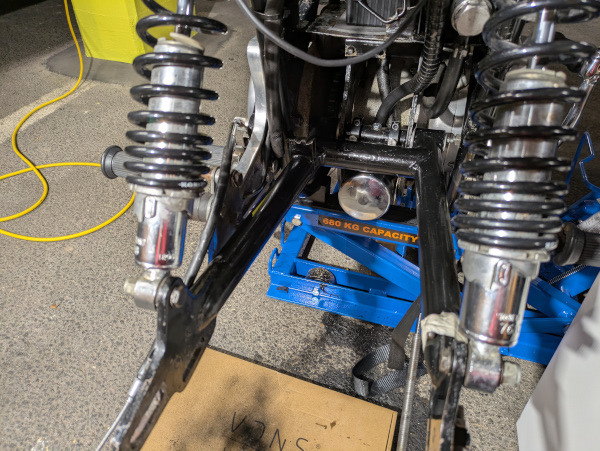Introduction
I’ve inherited a Norton Commando 750 from my dad. He’s still alive and kicking, but he’s moved on to sports cars and passed the bike down to me. The bike is in good running condition and has developed a nice patina over the years. My plan is to mainly ride and enjoy it, but I’d also like to make some improvements—particularly around safety and rideability. I’m also hoping to gradually return the bike to a more original appearance, as it’s currently set up in a café racer style.
I’ll use this thread to document and share the progress I make as I fettle, fix, and improve the bike.
The bike was produced in 1970 and imported into Norway in 1994. Between 1994 and 1996, it passed through the hands of three different owners. In 1996, it was purchased by the individual who eventually sold it to my dad in 2000. My dad rode the bike fairly regularly from 2000 until we moved abroad in 2006. After that, the bike was put into storage. From around 2010 onward, he would occasionally take it out to start and ride briefly, but it hasn’t seen any meaningful use since 2006.
Quite a bit of work has been done to the bike over the years, mostly by the previous owner before my dad. In terms of the engine, the camshaft was honed, the engine main bearings and seats were replaced, and the oil pump was flattened. The valve controls, valves, pistons, piston rings, and gudgeon pins were all replaced. The magneto/distributor chain was changed out, along with the gaskets, seals, and exhaust lock rings.
On the intake side, the throttle valves were re-sleeved, and the original air filter box was replaced with a K&N air filter box. The gearbox had its gaskets, seals, and bushes replaced, and the primary chain drive was converted to a belt drive system.
The frame and body received a number of modifications: the rear suspension was swapped out for adjustable Koni units, and the tank, seat, and handlebars were replaced with Dunstall, Manx, and Vincent-style components, respectively. A quick twist throttle was installed, and the front and rear isolastics were replaced with Vernier units. The headsteady was changed to a Norvil racing version, and the front wheel bearings were also replaced.
Electrical upgrades included the installation of a Boyer electronic ignition system and rectifier, along with a modern H4 headlamp unit. Additionally, the tachometer and speedometer were both serviced.
On the frame and body, I plan to mount Kegler swing arm clamps—a modification strongly recommended in Norman White’s restoration book for improving stiffness in the cross tube. I also want to patch some of the paintwork on the frame and engine, and reattach the center stand.
Electrically, the wiring harness needs a complete rebuild. It currently has frayed and mismatched connectors, splices, and general messiness that could lead to future issues.
The throttle cable and wire need replacing, and the carburetors will be swapped for new Amal Premier units. The current carbs are slightly warped and have sticky slides. They were probably re-sleeved too tightly.
In the brakes, wheels, and tires department, the current Avon RoadRider tires look fine but are from 2009, so they’re well past their safe service life. I’ll replace those along with the brake shoes, which date back to 1999. I’m also considering adding a front brake stiffening kit, although I’ll first assess whether new shoes and a good adjustment will make that unnecessary. Additionally, I want to add a rear brake safety spring and replace the front brake cable with one that includes a rear brake light switch.
Finally, the instrument bezels and lenses need replacing. At some point, something was dropped on the gauges, denting both bezels and cracking one of the lenses.




